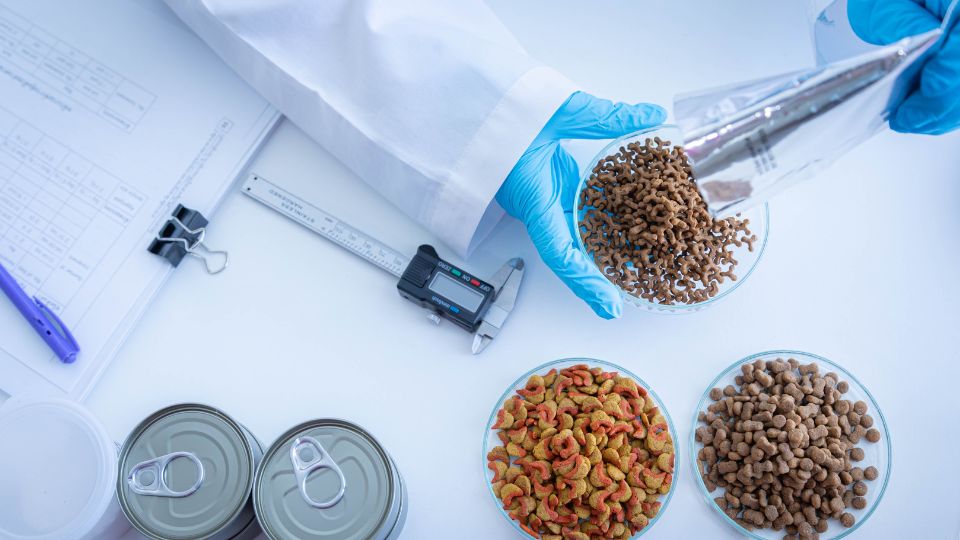Feed additives: the complex re-evaluation process in the EU

The approval process for feed additives has undergone major change, resulting both in significant costs and increased workload.
The overarching objective of re-evaluating all feed additives is to ensure a standardized and contemporary approach within Europe. This involves adhering to consistent guidelines and taking into account the latest scientific advancements in the field.
Why initiate an EU-wide re-evaluation?
Since 2003, when the decision was made to subject all existing feed additives on the market to re-evaluation by the Panel on Additives and Products or Substances used in Animal Feed (FEEDAP) from the European Food Safety Authority (EFSA), there has been a pervasive sense of uncertainty regarding the prevailing regulations.
Currently, Regulation (EC) 1831/2003 is the governing framework since its implementation in October 2004. It establishes the legal parameters for feed additives, including a significantly overhauled approval process for these substances.
The EFSA’s FEEDAP panel plays a crucial role, assessing not only the safety of feed additives for animals, but also considering their potential impact on human health and the environment. A noteworthy aspect of this evaluation is that all feed additives containing microorganisms are also tested for their possible resistance to antibiotics used in human and veterinary medicine.
Where to find current data
Formerly, Annex I of the PDF register showed additives undergoing re-evaluation, those provisionally approved for 5 years pending re-evaluation, and newly assessed additives approved for a decade. It also included authorizations for previously unapproved additives.
Meanwhile, Annex II catalogued additives without submitted applications, those with withdrawn applications, additives with new approvals under transitional arrangements, and those with expired approvals.
The recent shift to an exclusive online EU register, effective as of April 2023, has provided a more accessible and detailed overview of the current status of feed additives. These status categories can now easily be displayed in the online register by setting filters.
Re-evaluation process
To subject previously registered additives (known as ‘e-substances’) to the re-evaluation process, applications to the EFSA were submitted in November 2010. Anyone could submit an application, including individuals, additive manufacturers, pet food producers or any other interested party.
The application process demands a substantial workload, necessitating the submission of a comprehensive dossier containing detailed information and studies on the additive in question. Applicants are subject to fees, leading to submissions primarily from industry participants with a vested interest in the continued use of the respective feed additive.
In some cases, alliances were formed to collectively submit an application to share effort and costs. Authorizations cannot be granted for the sole use of the applicant – authorized feed additives can be used by everyone. For some substances with minimal industry interest, no re-evaluation applications were filed.
Approval process
Approval is granted individually for each substance, which makes it hard to maintain the overview. Upon successful re-evaluation, a feed additive is granted approval for a period of 10 years, after which re-evaluation is needed again.
While the EU Commission provides the community register as an informational source, it is crucial to note that this resource itself is not legally binding. The legally binding documents are the corresponding regulations, but they are accessible for each listed additive in the register. Nevertheless, it is advisable to double- check whether the current consolidated version of a regulation is listed, as the database is not always guaranteed to be fully updated.
Verifying the status
Feed business operators bear the responsibility of regularly verifying the status of the feed additives they use in their products. Re-evaluated additives are distinguishable by their new identification numbers.
The first digit of the new identification number provides a simple and direct indication of the category to which the additive has been assigned (e.g. 1f – thickening agent). It is not only necessary to check whether an additive has been newly approved, but also whether specifications on maximum quantities, approved animal species or general instructions for use have changed.
It goes without saying that these changes must be integrated into the company’s own process. Different transition periods must be taken into account depending on the industry sector.
Withdrawals of feed additives
Feed additives for which no application has been submitted, the application has been fully or partially withdrawn, or there is no positive opinion from EFSA, are withdrawn from the market by regulation. Here, there are also corresponding transitional periods.
But beware: a market withdrawal of a feed additive does not affect its classification as a feed additive – it remains unchanged even if removed from the market. A clever feed manufacturer could ponder using the feed additive that has been withdrawn from the market as single feed material in their recipes – after all, it is no longer an approved feed additive.
Sadly, this is not possible. Although the additive has lost its authorization, it has not lost its classification in the ‘additives’ category. A decision on a different categorization must be actively taken – as long as these substances remain ‘feed additives not approved in the EU’. It’s also important to note that an entry in the EU register of feed materials does not constitute a legally binding classification of substances as feed materials.
The classification of a substance as a feed additive can be decided in the so-called comitology procedure. This must be done on a case-by-case basis for each substance. So far, no decisions have been made on this basis.
